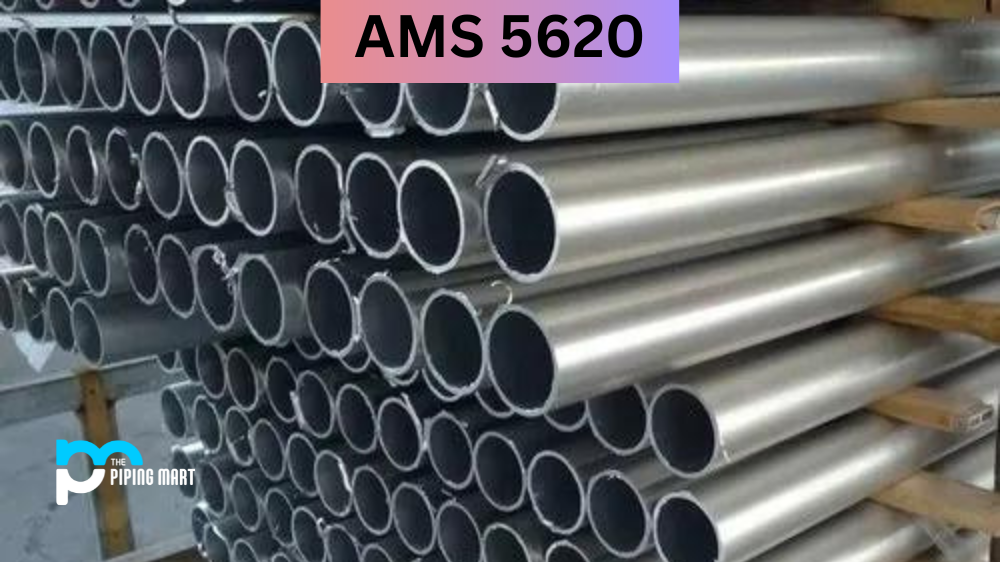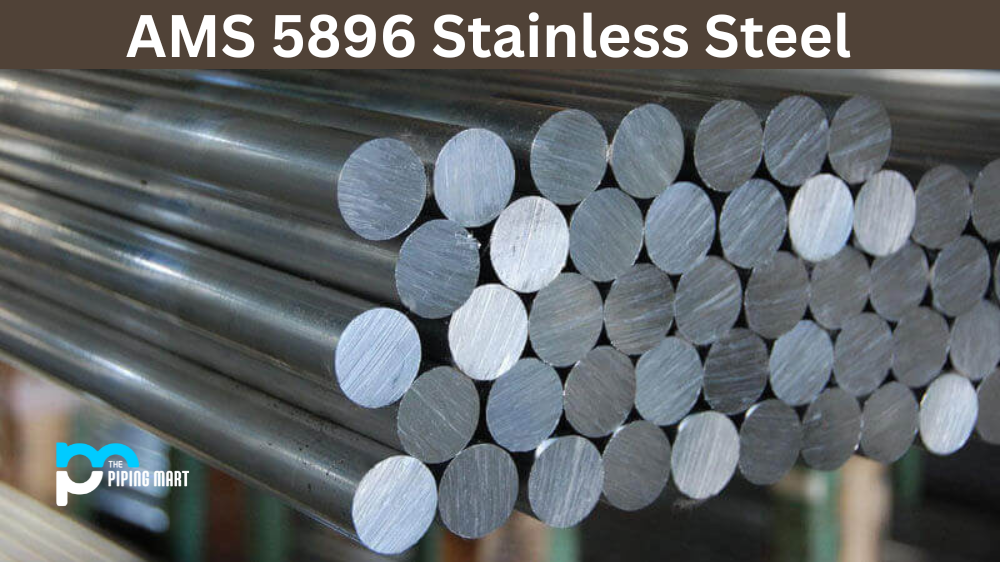When selecting materials for a particular application, it is important to consider the material’s properties to perform well. AMS 5620 is a type of stainless steel that has gained popularity in various industries due to its exceptional physical and mechanical properties. This post will explore the composition, physical and mechanical properties, and applications of AMS 5620 material.
What is AMS 5620?
AMS 5620 (also known as 420 Stainless Steel) is a specification that outlines the requirements for a type of stainless steel called 416. This steel contains a minimum of 12% chromium, making it highly corrosion-resistant and oxidation-resistant. It also contains sulfur, which improves its machinability. AMS5620 is commonly used in applications that require high strength and good resistance to wear and tear, such as machinery and equipment components. This specification ensures that the material meets specific standards for composition, quality, and performance so that engineers and manufacturers can have confidence in its properties and reliability. Understanding the properties and applications of AMS5620 can help professionals in various industries make informed decisions about the materials they use in their products.
What Form Is AMS 5620 Available at Piping Mart?
- Nuts
- Bolts
- Fasteners
- Electrodes
- Sheets Plates
- Tubing
AMS 5620 Composition
AMS 5620 bars is a type of stainless steel that belongs to the 420 stainless steel family. It comprises iron, chromium, nickel, copper, and manganese. The material includes precipitating hardening elements such as aluminium and Nb/Ta that enhance strength. It also contains carbon and sulfur that further improve its machinability. Overall, AMS 5620 has a good combination of corrosion resistance, strength, toughness, and machinability.
| C | Mn | Si | P | S | Cr | |
|---|---|---|---|---|---|---|
| AMS 5620 | 0.15 max |
1.00 max |
1.00 max |
0.04 max |
0.03 max |
min: 12.0 max: 14.0 |
AMS 5620 Physical Properties
AMS 5620 tubes is known for its excellent physical properties. It has a density of 7.8 g/cm³ and a melting point of 1398 °C. The coefficient of thermal expansion is 10.8 µm/mºC, which means it expands minimally when heated. AMS 5620 also has good thermal conductivity, which enables it to withstand high temperatures.
| Density kg/m^3 |
Thermal Conductivity W/mK |
Electrical Resistivity (Microhm/cm) |
Modulus of Elasticity |
Coefficient of Thermal Expansion µm/m/°C |
Specific Heat (J/kg.K) |
|---|---|---|---|---|---|
| 7750 | 24.9 at 212°F | 550 (nΩ.m) at 68°F | 200 GPa | 10.3 at 32 – 212°F | 460 at 32°F to 212°F |
| – at 932 °F | 10.8 at 32 – 599°F | ||||
| 17.7 at 32-1000°F |
AMS 5620 Mechanical Properties
AMS 5620 sheets is a high-strength material that exhibits excellent mechanical properties. It has a tensile strength of 1450–1650 MPa and a yield strength of 1310–1510 MPa. The elongation at break is around 4%, which means it can stretch without breaking. AMS 5620 also has a good impact resistance of 54 J at -40°C.
| Tempering Temperature (°C) | Tensile Strength (MPa) | Yield Strength 0.2% Proof (MPa) |
Elongation (% in 50mm) |
Hardness Brinell (HB) |
|---|---|---|---|---|
| Annealed * | 655 | 345 | 25 | 241 max |
| 399°F (204°C) | 1600 | 1360 | 12 | 444 |
| 600°F (316°C) | 1580 | 1365 | 14 | 444 |
| 800°F (427°C) | 1620 | 1420 | 10 | 461 |
| 1000°F (538°C) | 1305 | 1095 | 15 | 375 |
| 1099°F (593°C) | 1035 | 810 | 18 | 302 |
| 1202°F (650°C) | 895 | 680 | 20 | 262 |
AMS 5620 Equivalents
| Grade | UNS No | Old British | Euronorm | Swedish SS | Japanese JIS | ||
| BS | En | No | Name | ||||
| AMS 5620 | S42000 | 420S37 | 56C | 1.4021 | X20Cr13 | 2303 | SUS 420J1 |
AMS 5620 Uses
AMS 5620 material is widely used in various industries that require high-performance materials. Its strength, toughness, and corrosion resistance are ideal for aerospace, defence, medical, and oil and gas applications. AMS 5620 makes various components such as gears, valve bodies, shafts, and pump parts. Its excellent machinability makes it a favourite of manufacturers requiring precision machining.
AMS 5620 Hardness and Heat Treatment
AMS 5620 has a hardness that is determined by its heat treatment process. The material achieves its maximum hardness of HRC 48–52 when heat-treated at 482–593°C for 1 hour and then air-cooled. Lowering the temperature leads to reduced hardness but improved toughness. AMS 5620 can also be annealed at 1038–1149°C to relieve stress and enable further cold working.
Conclusion:
AMS 5620 is a material that offers a range of impressive properties that make it ideal for high-performance applications. Its composition, physical and mechanical properties, and applications such as aerospace, defence, medical, and oil and gas make it a popular choice for manufacturers. Understanding the hardness and heat treatment options for AMS5620 is essential to achieve its desired properties, such as high strength and corrosion resistance. If you are looking for a strong, tough, and corrosion-resistant material, AMS 5620 is an excellent choice.

A passionate metal industry expert and blogger. With over 5 years of experience in the field, Palak brings a wealth of knowledge and insight to her writing. Whether discussing the latest trends in the metal industry or sharing tips, she is dedicated to helping others succeed in the metal industry.




